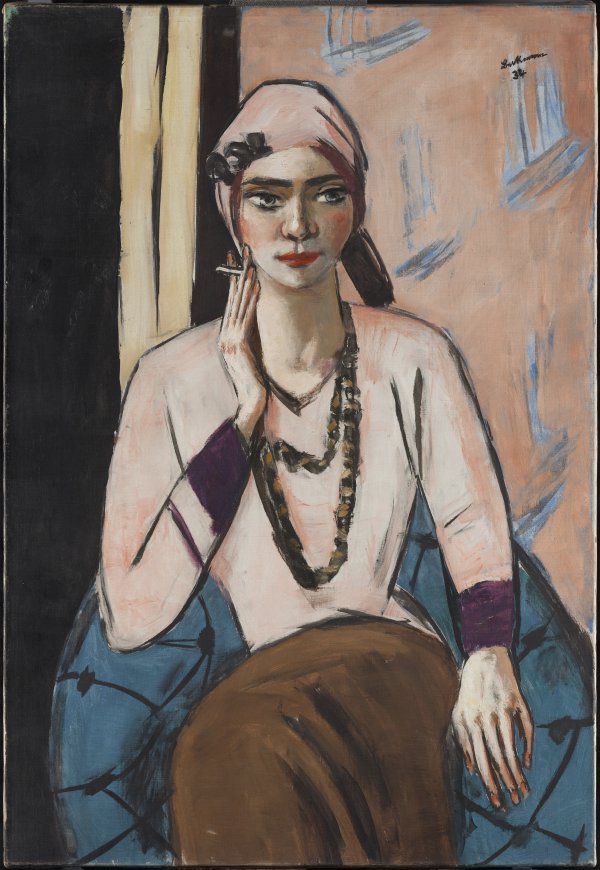
Seven Navajo riders on horseback: Canyon de Chelly. - Edward S. Curtis, 1904
A lighthouse transformed, after being frozen by a glacial storm on Lake Michigan.
Credit: Thomas Zakowski photography
Michigan is nuts -
"I’m just driving up the road to the cornershop for some tabs, love…
Ohhhhhh…
I’m just walking…".
Max Beckmann - Quappi in a Pink Jumper
Beckmann’s incisive personal style softened perceptibly from the mid-1920s, when he met and married his second wife, Matilde von Kaulbach, better known as Quappi. The thick black outlines, earlier used to convey his bitter condemnation of contemporary society, thenceforth served to define the facial features of his attractive young wife. Beckmann’s swift brushstrokes turn Quappi—portrayed here on a blue armchair, fashionably dressed and holding a cigarette—into a prototype of the modern woman; resolute and self-confident. The portrait was started in 1932 and finished in 1934, by which time Beckmann had changed the date and also toned down Quappi’s smile to reflect the couple’s concern at the rise of the Nazis to power.
Max Beckmann was an isolated case in the German art scene of his day. He did not belong to any of the successive Expressionist movements and, although he had certain affinities with the New Objectivity, its rigid, cold formulas never entirely convinced him. Beckmann preferred to portray the world as a tragedy for man and his language became tinged with a very bitter tone.
Quappi in Pink Jumper is one of the many portraits of the artist’s wife, Mathilde von Kaulbach (1904–1986), whose pet name was Quappi. Daughter of the German painter Friedrich August von Kaulbach, in 1925 she became Max Beckmann’s second wife and his faithful lifelong companion. The artist painted her on many occasions, portraying her as the epitome of the new type of assertive, modern and self-confident woman often found in his contemporaries’ works.
According to the catalogue raisonné of the artist’s work, the portrait in the Museo Thyssen-Bornemisza was executed in two stages. The portrait was practically finished at the first sitting in Frankfurt in 1932; but two years later, while the couple were in Berlin, the painter made a few modifications and, as can be seen at first glance, changed the date next to his signature. It is known from the testimony of Stephan Lackner, the first owner of the portrait and a good friend of Beckmann’s, that in the first version Quappi wore more of a smile. It is no coincidence that during the time that had elapsed between the two sessions the Beckmanns’ life had undergone a major change. The Nazis had forced the painter to step down from his post as a lecturer at the Frankfurt academy and the couple lived in hiding in Berlin, endeavouring to go unnoticed.
TL;DR
Short version just for you. The Nazis ruined their lives and the Jewish artist amended the 1932 painting of his wife in 1934 to reflect this by wiping the smile off her face.

Stronzi’s glue running truck worked well right up until he thought it was a plane and tried to land it on the sidewalk. Los Angeles - 1926
Something fucked is going on. Lopwell - 2021
Take it easy Lad’s, Red Srtipe is available
Portraits of Inuit people taken by RCMP officer Douglas Moodie and his wife Geraldine while he was stationed at Fullerton Harbour, Nunavut.
Unidentified children - 1905
Keveowk - 1904-1905
Odile Panimira Uqajuitu (also known as Kutaktuk) - 1905
Like living in a spacesuit most of your life

August 1929: A man standing alone on a rain-drenched pavement on the Embankment.
That is stunning. Love it!











